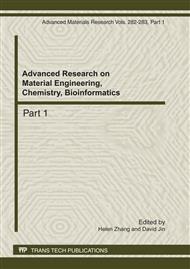p.367
p.371
p.375
p.379
p.384
p.388
p.395
p.399
p.403
The Aggregated Signature for Many-to-One Communication Based on Rabin Signature
Abstract:
To improve the efficiency of many-to-one communication, the aggregated signature Rabin signature is proposed. When the several senders sign and send the message to a receiver, they could do the same operation as the common Rabin signature. The several signature texts are aggregated and produced a signal signature text. Instead of verifying the several signature for several times, the verifier only verifies the aggregated signature for one time to determine the validation of the all of the messages. The discussion shows that, by this way the data amount and the computational cost could be reduced nearly 1/2 of the common algorithm. The proposed algorithm has the same secure level as the common Rabin signature.
Info:
Periodical:
Pages:
384-387
Citation:
Online since:
July 2011
Authors:
Price:
Сopyright:
© 2011 Trans Tech Publications Ltd. All Rights Reserved
Share:
Citation:


